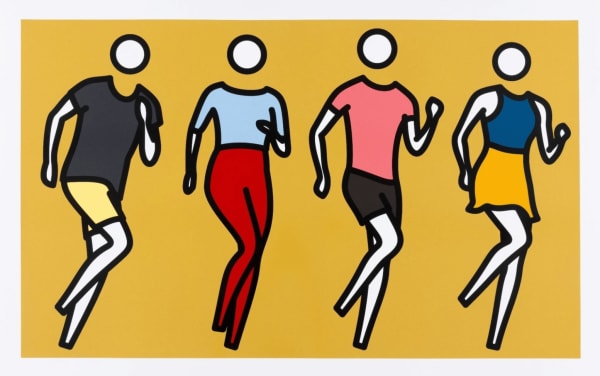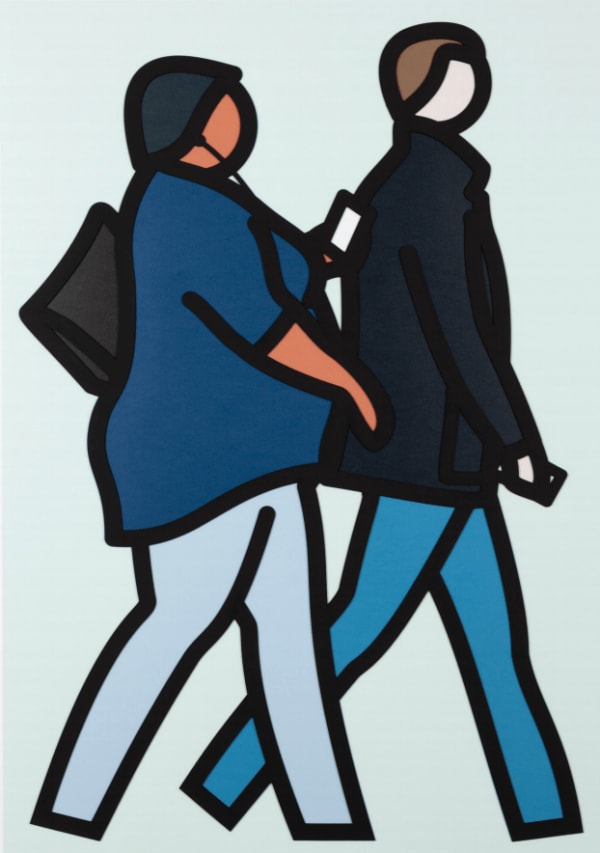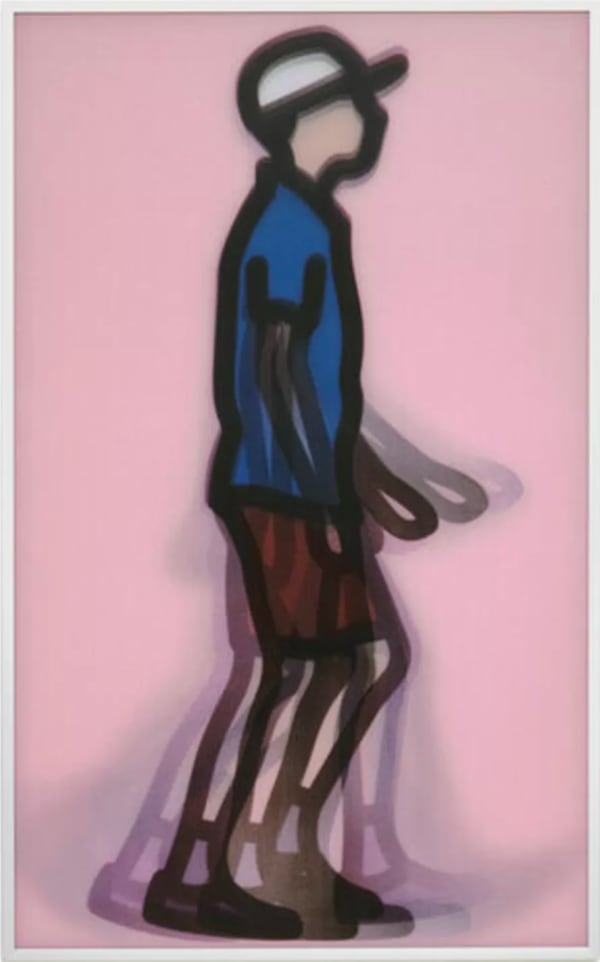Julian Opie’s artistic language is deceptively simple: a line, a contour, a block of color, a stripped-down representation of a figure in motion. Yet within this minimal vocabulary lies one of the most enduring and influential visual systems of contemporary art. Opie’s practice sits at a rare intersection between two major 20th-century movements - Pop Art and Minimalism - absorbing their principles and extending them into a visual language that feels uniquely suited to the digital age.
To understand Opie is to understand how forms evolve across eras: how the commercial visuals championed by Warhol and Lichtenstein merge with the precision sought by Kelly, Judd, and Martin. Opie’s work compresses these histories, translating them into a universal language that now circulates across cities, technologies, cultures, and generations.

Pop Art's Legacy in Opie's World: Icons, Everyday Life, and the Culture of Looking
Pop Art fundamentally changed the way artists saw the world - and the way the world saw art. Its core assertion was radical: everyday imagery was worthy of fine art. Opie inherits and expands this principle. His subjects - walkers, commuters, drivers, runners - are the anonymous protagonists of contemporary life. They are not glamorous; they are not extraordinary. They are us.
1. Warhol’s Influence: The Democratization of the Visual
Andy Warhol transformed familiar images into icons. Opie does the inverse: he transforms icons into familiar images. By stripping portraits down to essential shapes, he eliminates hierarchy. Everyone can become a symbol.
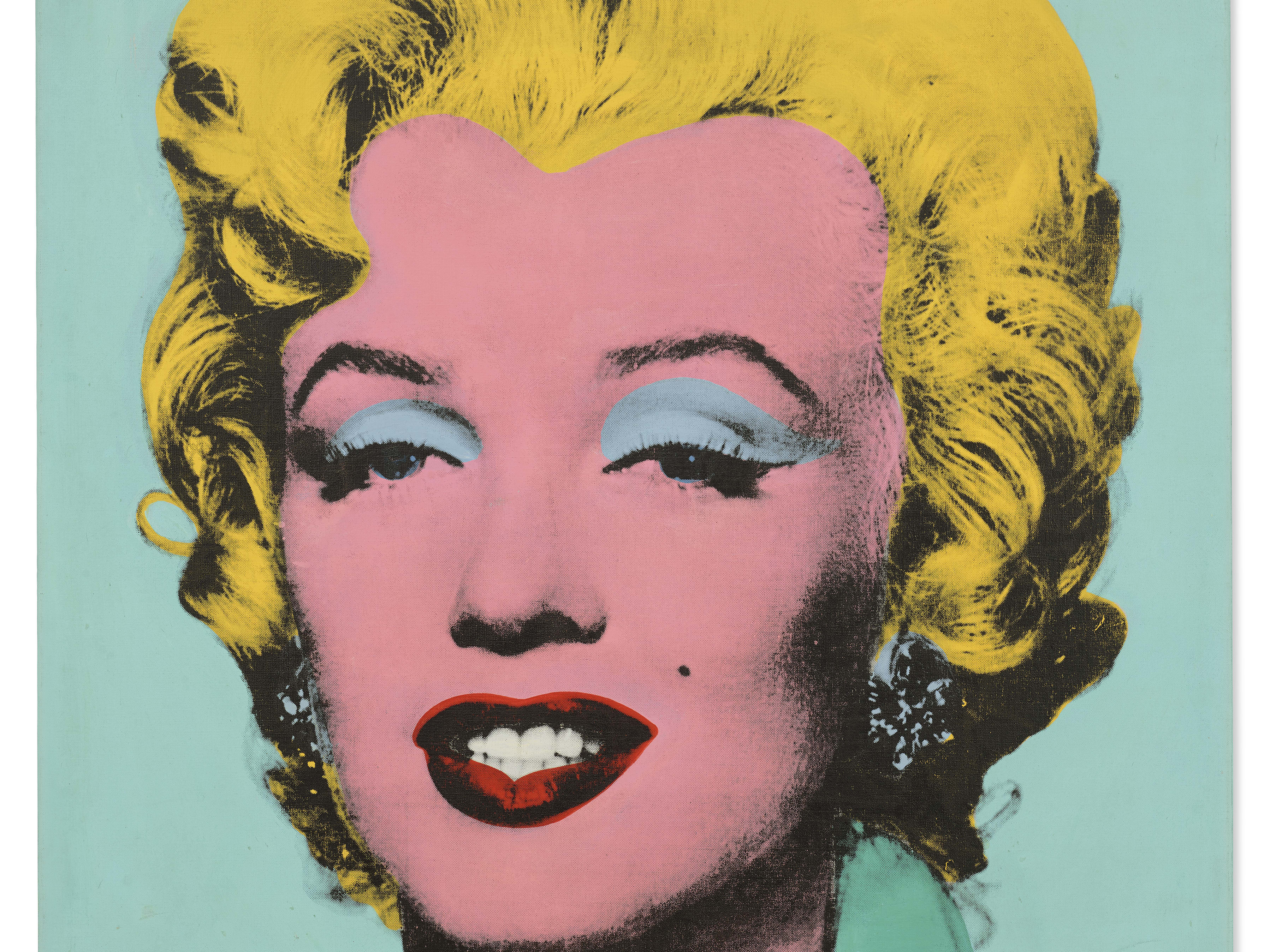
Where Warhol made Marilyn mythic, Opie makes the everyday universal. Both erase the distance between viewer and subject - but with opposite strategies. Warhol’s repetition amplified celebrity aura; Opie’s reduction dissolves it.
2. Lichtenstein’s Graphic Precision
Lichtenstein’s legacy is visible in Opie’s reliance on graphic clarity. Lichtenstein enlarged the visual language of comics to monumental scale; Opie takes the visual logic of signage and information design and turns it into an artistic system. Like Lichtenstein’s iconic dots and speech bubbles, Opie’s thick, unbroken contours function as a brand, a signature, a shorthand for identity.
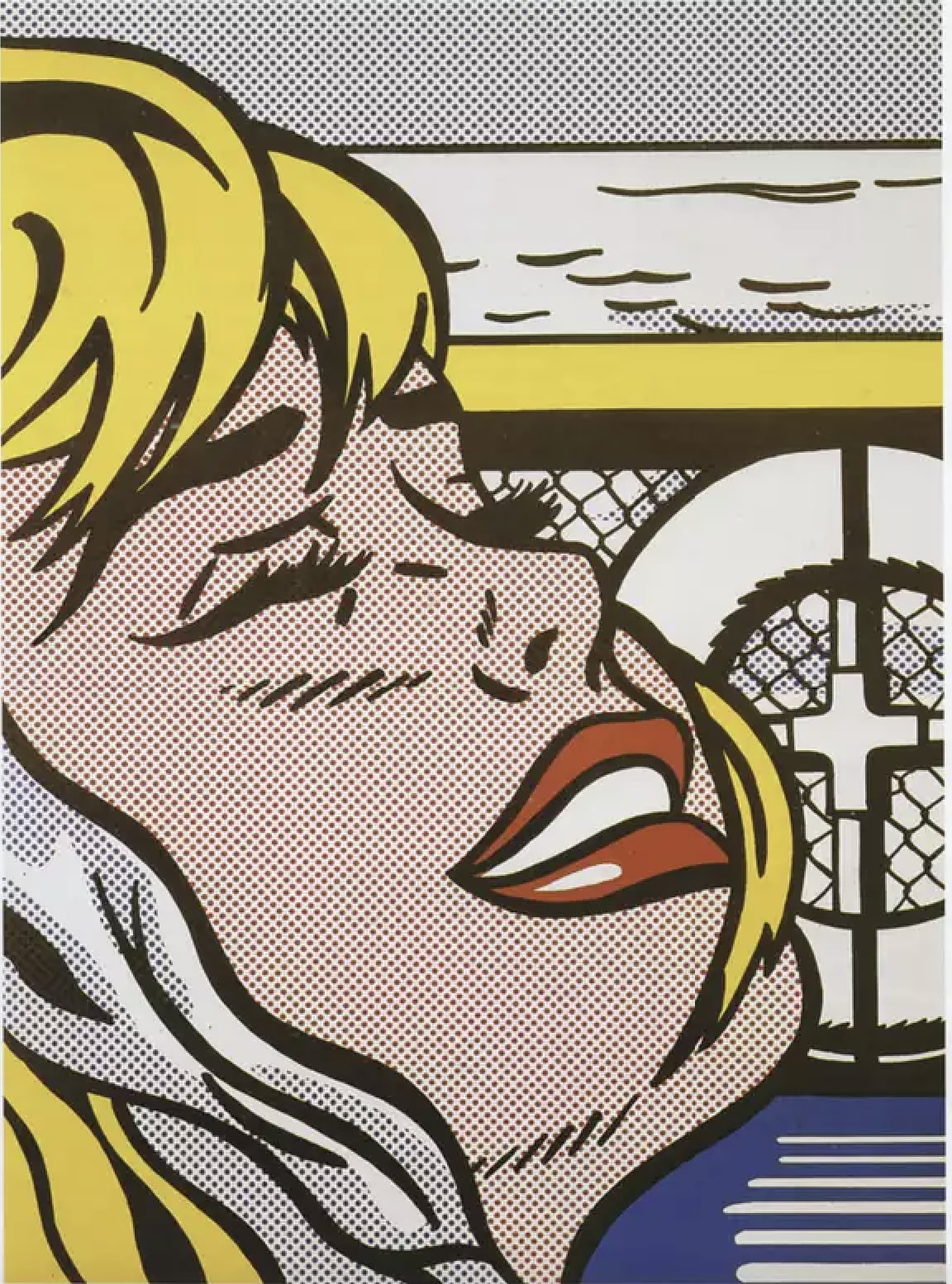
3. Signage, Street Graphics, and the Visual Architecture of Modern Cities
Opie’s imagery borrows from the universal, pictographic language that structures modern life:
-
airport signage
-
traffic icons
-
pedestrian crossing symbols
-
public transit diagrams
-
digital avatars
These visual tools are designed to be understood immediately, across languages and cultures. Opie adopts their clarity not merely as an aesthetic strategy, but as a worldview: art, like signage, can speak in universal terms.
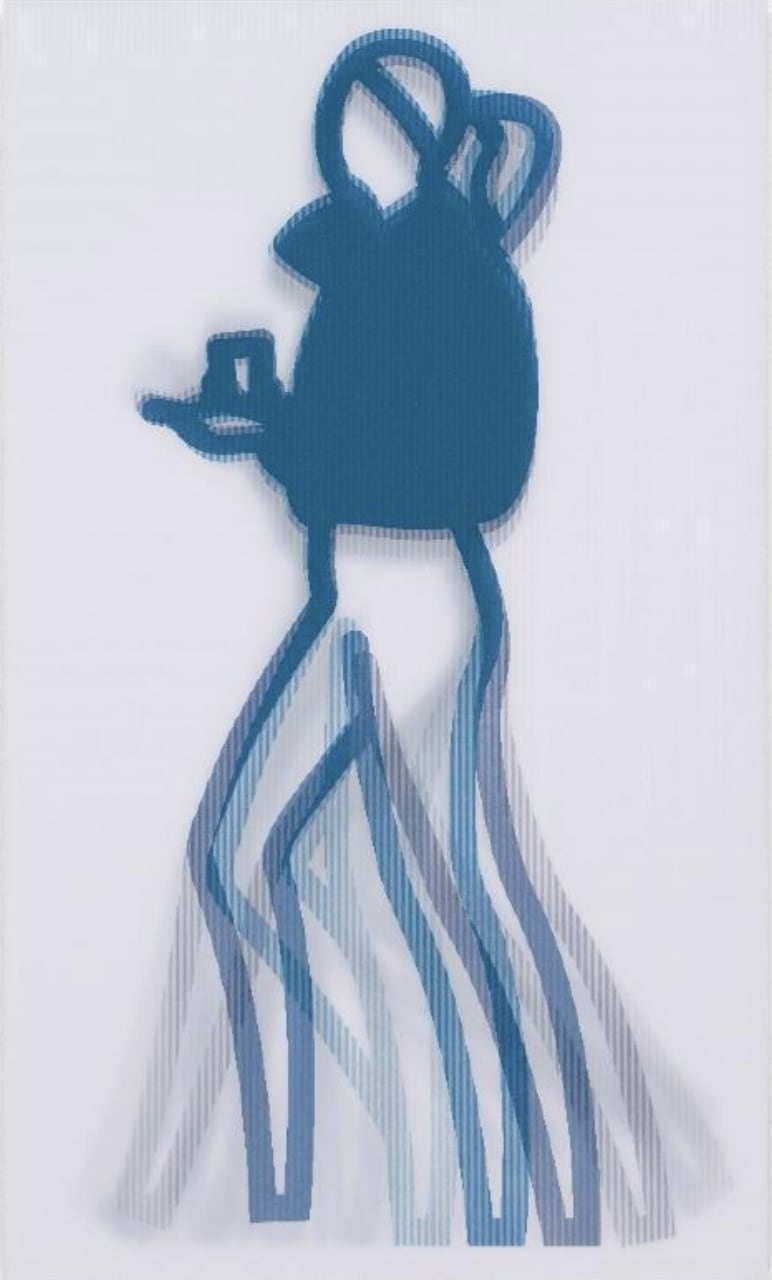
Minimalism's Discipline: Reduction, Form, and the Pursuit of Essence
If Pop Art establishes Opie’s visual tone, Minimalism establishes his discipline. His commitment to economy - of line, of form, of detail - places him squarely within a Minimalist tradition where the goal is clarity, essence, reduction.

1. Ellsworth Kelly and the Power of Shape
Kelly’s work taught the art world that form alone could transmit feeling. Opie applies this principle to the human body, using contour the way Kelly used color blocks - assertive, elegant, distilled.

2. Donald Judd and the Logic of Systems
Minimalism introduced the idea that art could operate as a system: repeatable, consistent, modular.
Opie’s practice echoes this:
-
his walking figures follow a sequential logic
-
his portrait heads follow a recognizable formula
-
his landscapes rely on repeated structural forms
This systematic approach makes his work both legible and expansive. Viewers instantly identify an Opie, yet each version evolves the system - new hair, new movement, new environments.

3. Agnes Martin and the Aesthetics of Calm
While Opie is seldom described as meditative, his landscapes and still images evoke a similar quietude. The horizon line, a calm field of color, a rhythmic distribution of shapes - these echo Martin’s pursuit of serenity, even as Opie’s world remains rooted in contemporary realism.
The Syntax of Simplicity: How "Less is More" Becomes an Entire Universe
Opie’s greatest contribution is the demonstration that reduction need not eliminate richness. His art proves that minimal elements can produce maximal recognition, emotion, narrative, and movement.
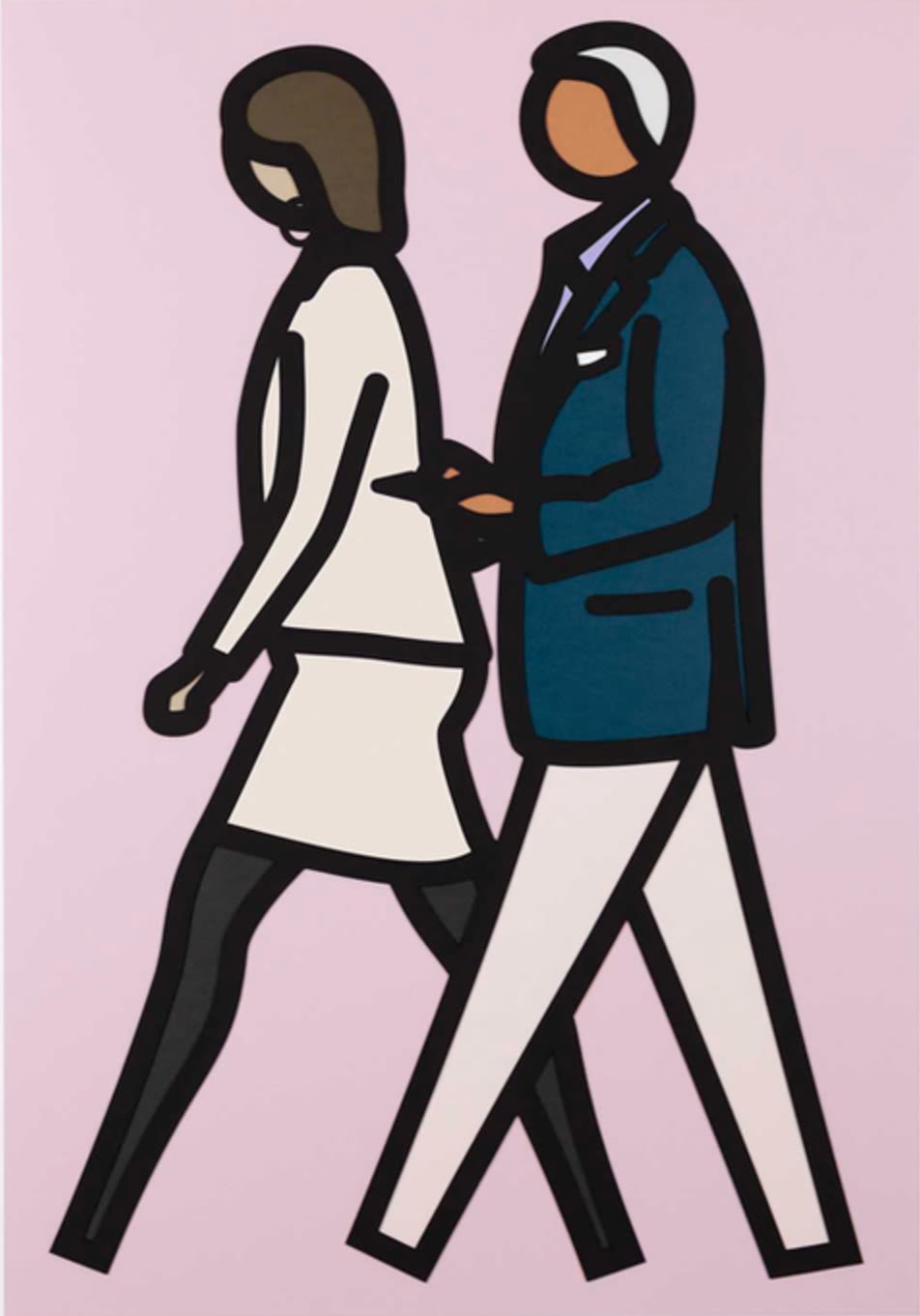
1. The Science of Instant Recognition
Humans are neurologically wired to recognize faces with minimal data. Opie uses this to his advantage. A head shape, a hairstyle, a pair of glasses - suddenly, a personality emerges. The viewer fills in what Opie intentionally leaves out.
2. Movement Through Line
Perhaps nowhere is Opie’s mastery clearer than in his animated walking figures. With only a handful of lines, he conveys:
-
rhythm
-
tempo
-
attitude
-
individuality
This kinetic clarity links him to early photographic experiments by Eadweard Muybridge and to the birth of animation. Yet Opie’s figures feel entirely modern - avatars wandering through a digital cityscape.
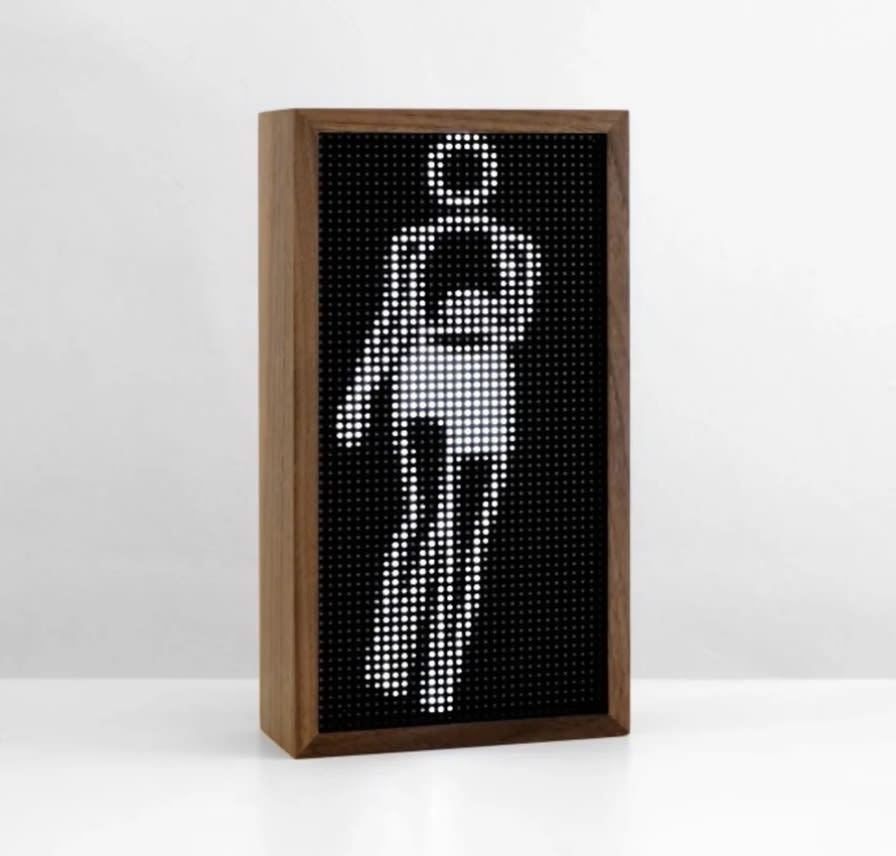
3. Universality Through Abstraction
Opie’s figures often have no facial features - yet they are not anonymous. They are archetypal. They represent types, roles, gestures, the everyday theater of public life. This universality allows collectors, viewers, and global audiences to see a part of themselves reflected back.
A Contemporary Visual Language Born of Historical Foundations
Opie’s ability to merge Pop Art’s cultural immediacy with Minimalism’s formal precision positions his work uniquely in contemporary art.
1. A Bridge Between Eras
-
From the Pop movement, he inherits the embrace of mass culture and the aesthetics of the commonplace.
-
From the Minimalists, he inherits the discipline of reduction and the pursuit of essential truth.
Opie synthesizes these influences into a visual language that feels tailor-made for today’s world - a world saturated by icons, pictograms, notifications, and digital shorthand.
2. Relevance in an Age of Screens
Opie’s art thrives in a screen-based age because it mirrors the way we now communicate:
-
emojis
-
profile pictures
-
motion graphics
-
UX icons
-
social media avatars
His simplicity is not just aesthetic; it is infrastructural. It matches our cultural moment.

3. Legacy and Influence
Opie has shaped how contemporary artists think about reduction, identity, and the iconography of the everyday. His influence can be traced in:
-
fashion and design
-
music culture (most famously his Blur album cover)
-
motion graphics
-
global signage aesthetics
-
public art installations
His universality ensures his long-term relevance: he is not anchored to a specific culture, era, or identity - but to the broader language of contemporary life.
The Iconic Clarity of an Artist Who Sees the World in Symbols
Julian Opie’s place between Pop Art and Minimalism is not a coincidence - it is a convergence. Pop Art gave him cultural freedom; Minimalism gave him formal discipline. Together, they shaped an artist whose work feels both archetypal and contemporary, both graphic and emotional, both reductive and expansive.
In a century defined by information overload, Opie offers clarity.
In a time of constant visual noise, he offers a distilled language of motion and meaning.
His universe is one where a single line can become a gesture, a symbol, or a story.
And perhaps that is Opie’s greatest achievement: he shows us that in a world full of excess, the simplest forms can speak the loudest.




